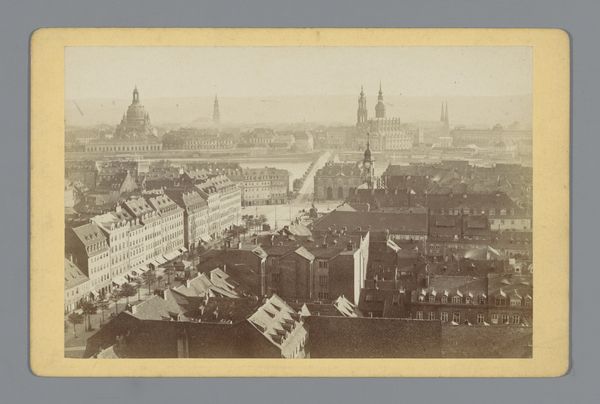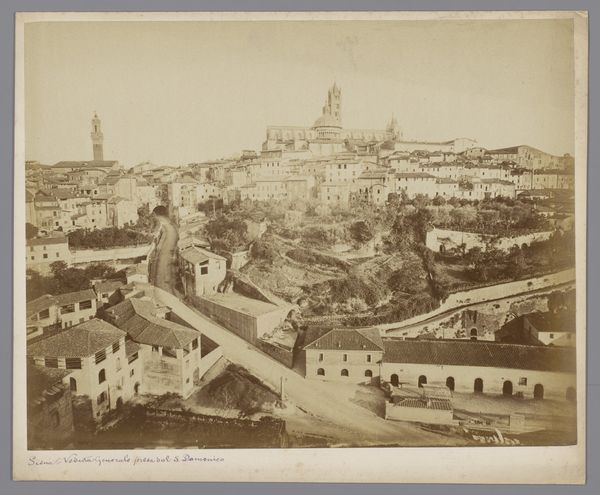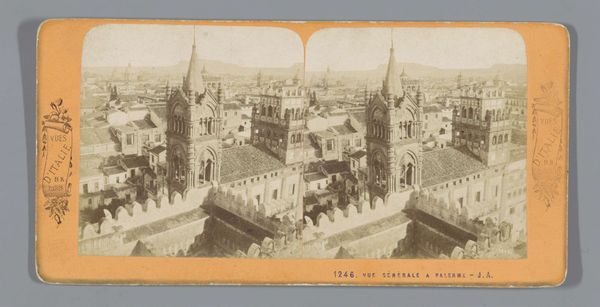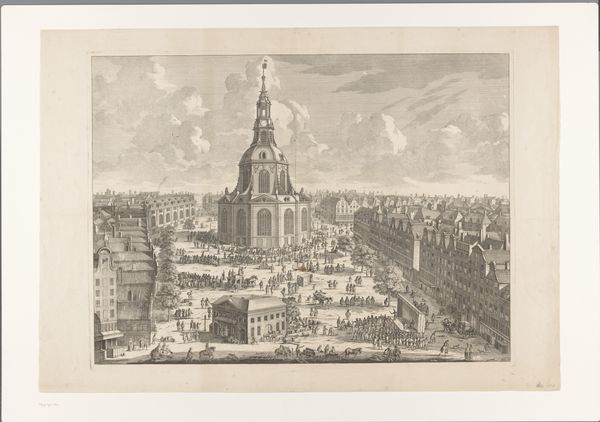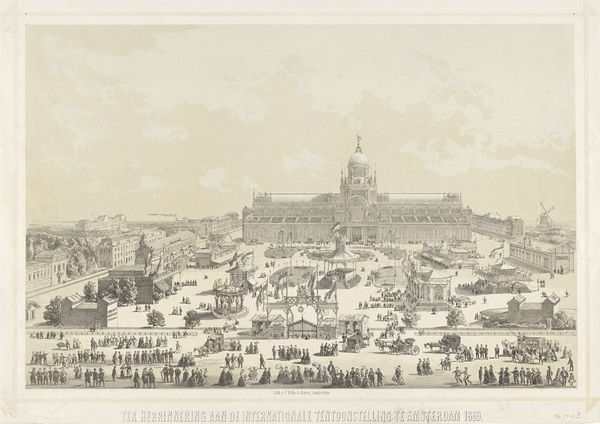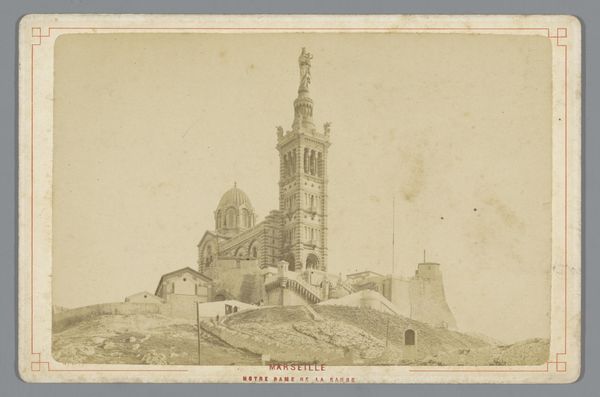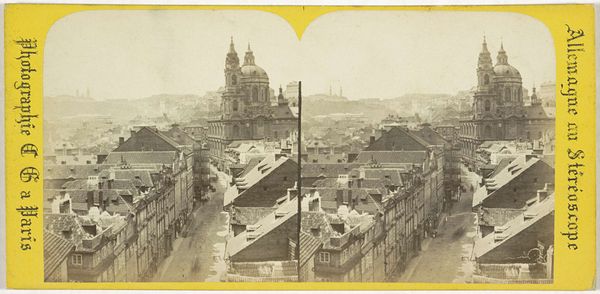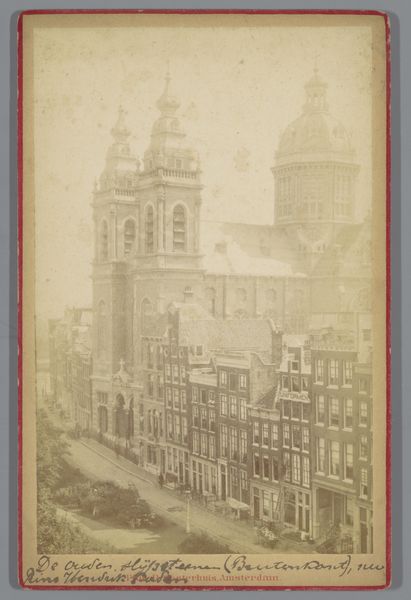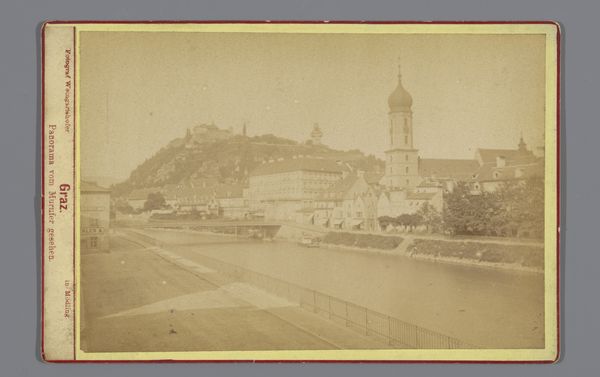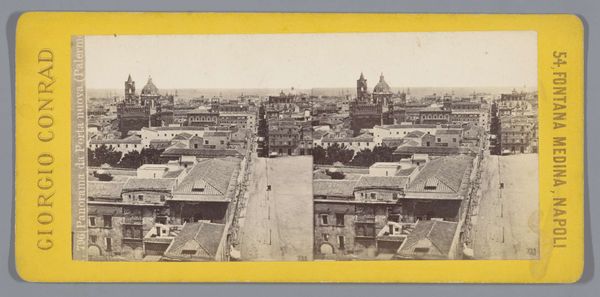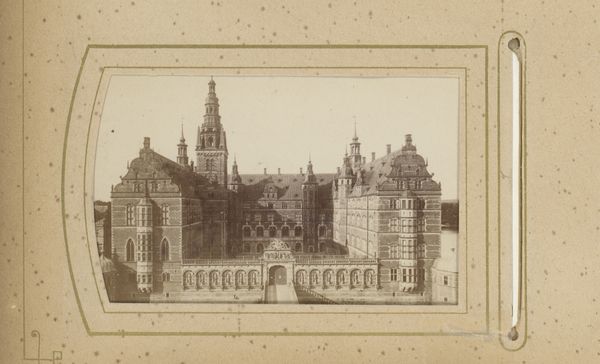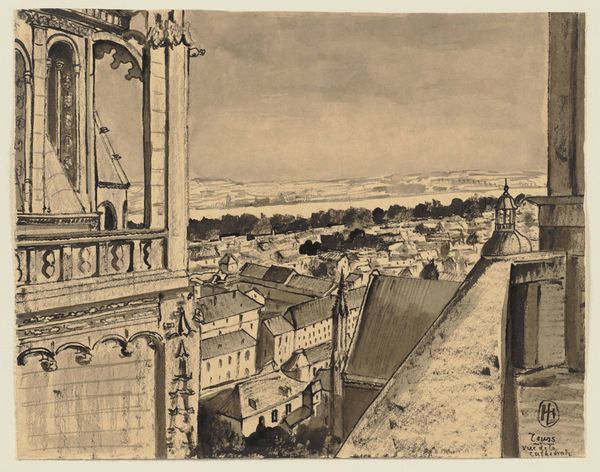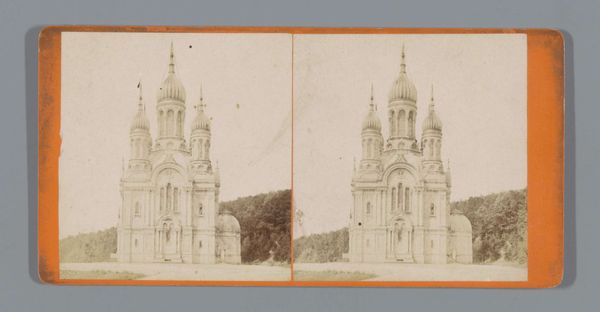
Dimensions: height 101 mm, width 137 mm
Copyright: Rijks Museum: Open Domain
Curator: Here we have František Fridrich’s gelatin silver print, "View of Prague with the Church of St. Nicholas," taken sometime between 1875 and 1890. Editor: The overwhelming effect is dreamlike. The hazy tones soften all the sharp angles of the architecture; it almost looks like a watercolor painting. Curator: It's interesting you say that, considering its traditional classification as a photograph. Consider that early photography was still in its experimental phase. Many photographers adopted pictorial strategies that tried to emulate other genres such as Romantic painting or watercolor in their pursuit of the beautiful. This Romantic sentiment certainly imbued architecture with cultural memory and associations. What does St. Nicholas Church, for example, bring to mind? Editor: Well, churches always make me think of labor: the incredible skilled craftsmanship of the artisans who built it, and all the often-unseen labor needed to build, maintain, and manage the space over time. Plus, you see all those rooftops crowded together. Think about the workers making those tiles, hauling them up, and installing them. The social context and sheer means of production are fascinating to consider. Curator: Precisely! These details enrich the visual experience, layering the immediate image with profound cultural symbolism. The gelatin silver print, the chosen medium, creates its own effect here. Its sepia tones and softer focus contribute to a sense of history. Early photography was sometimes seen as less immediate and objective than the lens of modern media might imply. Rather, its visual vocabulary engaged and transformed long-standing archetypes, like the city on a hill, as we observe here, under an overcast, northern light. Editor: That focus on how something is made opens the image for me; it makes the visual a bit more human, more relatable. What's powerful is considering that it takes both: a material reality plus its encoded symbolism and allusions. That’s what brings an image to life, gives it potency. Curator: It makes one wonder what a contemporary photographer would capture if tasked to document that same iconic vista! It shows us how the photographer’s worldview shaped our very vision and memory of a time, culture, and place. Editor: Agreed. When you look closer, you can see how process shapes perception.
Comments
No comments
Be the first to comment and join the conversation on the ultimate creative platform.
